Your resume is often the first thing someone sees before deciding to talk to you. If you’re aiming for a role as a data analyst, your resume needs to show more than just your technical skills. It should give a clear picture of how you think through problems, find patterns in data, and support better decisions across teams.
This guide will walk you through how to build a resume that grabs attention. You’ll learn what to include, what to leave out, and how to present your experience in a way that speaks directly to hiring managers. It doesn’t matter if you’re entering the field or already have some experience—you’ll find practical tips here to help you create a resume that gets results.
Data Analyst Resume Examples
We’ve included a curated collection of data analyst resume samples, featuring real-world data analyst resumes crafted for different experience levels and industries. These samples serve as visual inspiration, allowing you to apply the concepts discussed above.
Data Analyst Resume
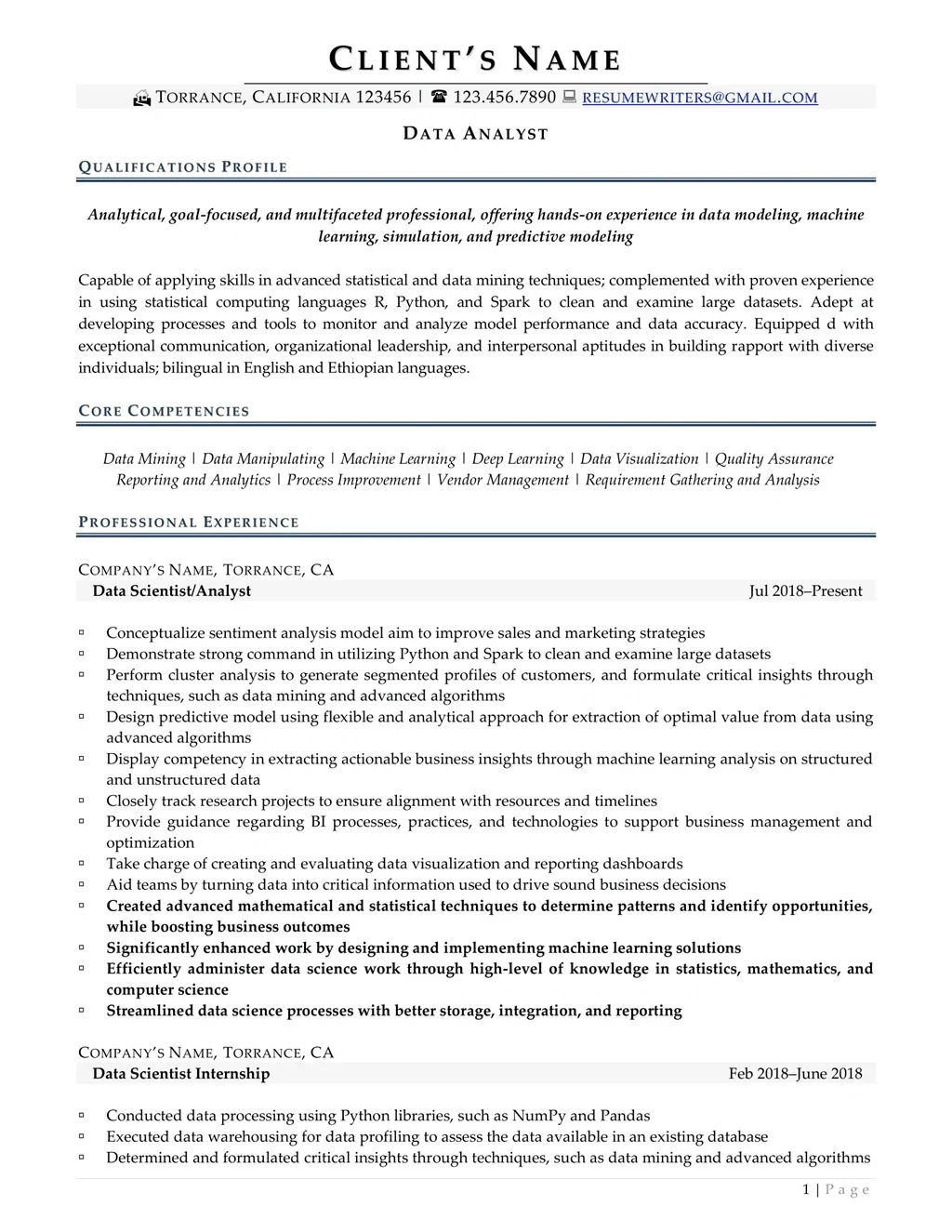
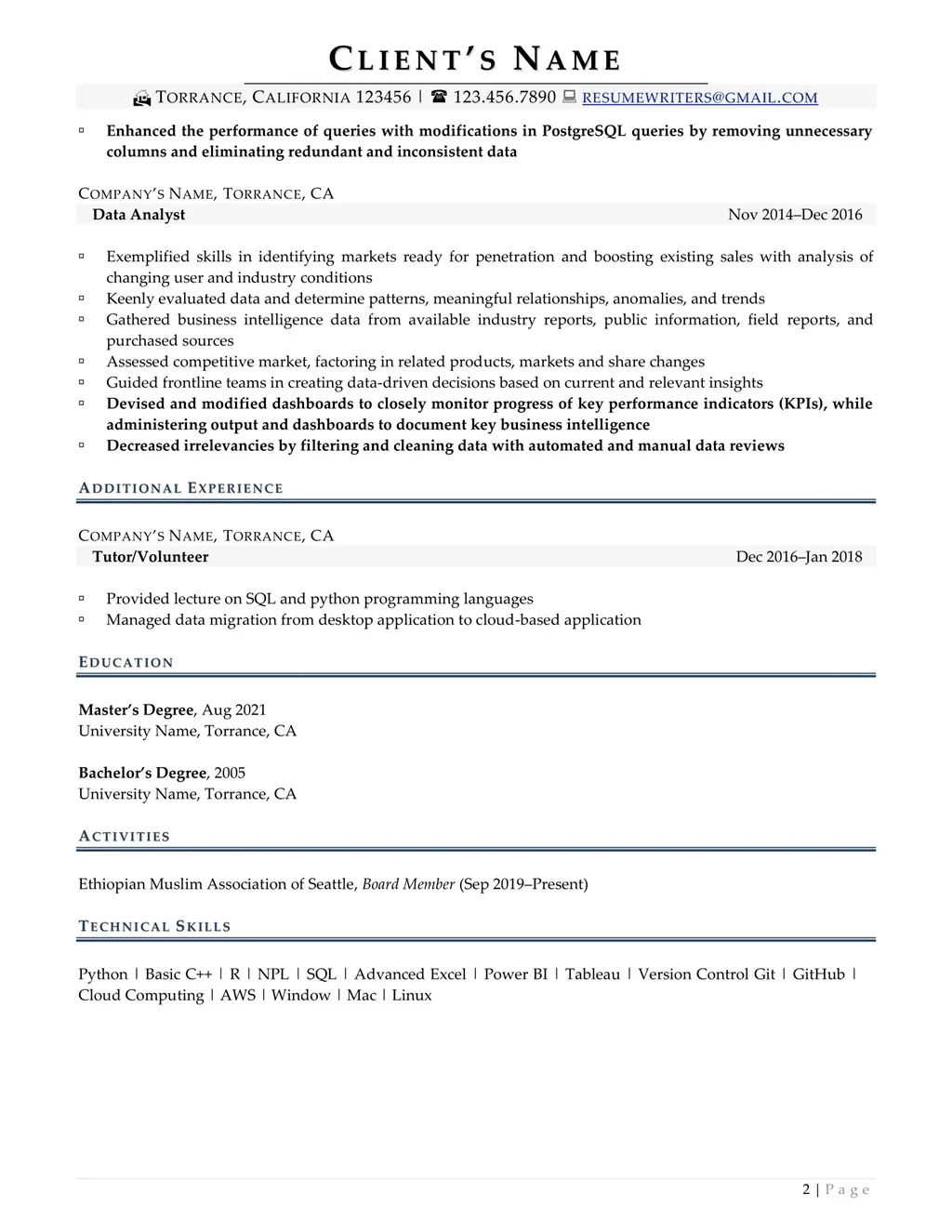
Download your own copy of the data analyst resume example above.
Entre-Level Data Analyst Resume
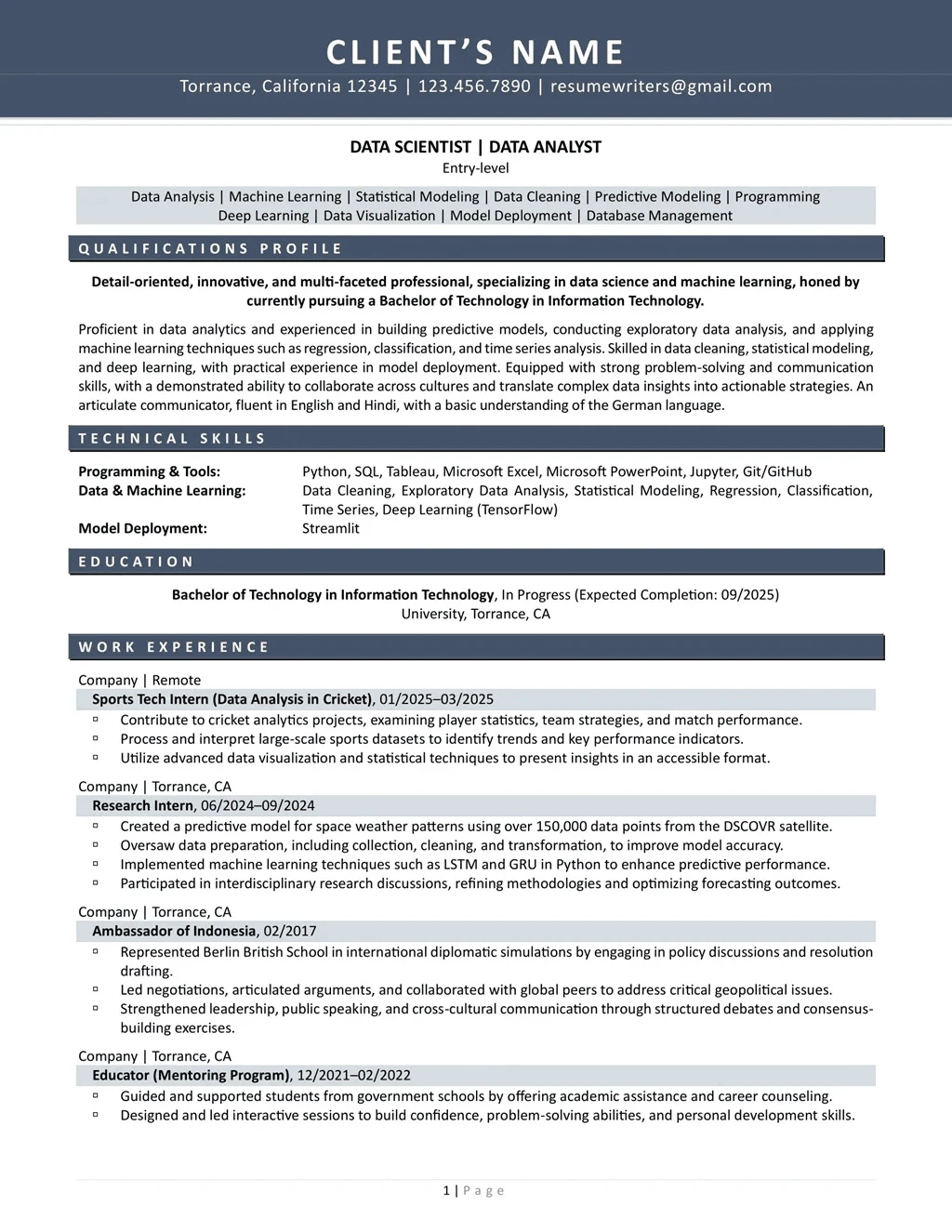
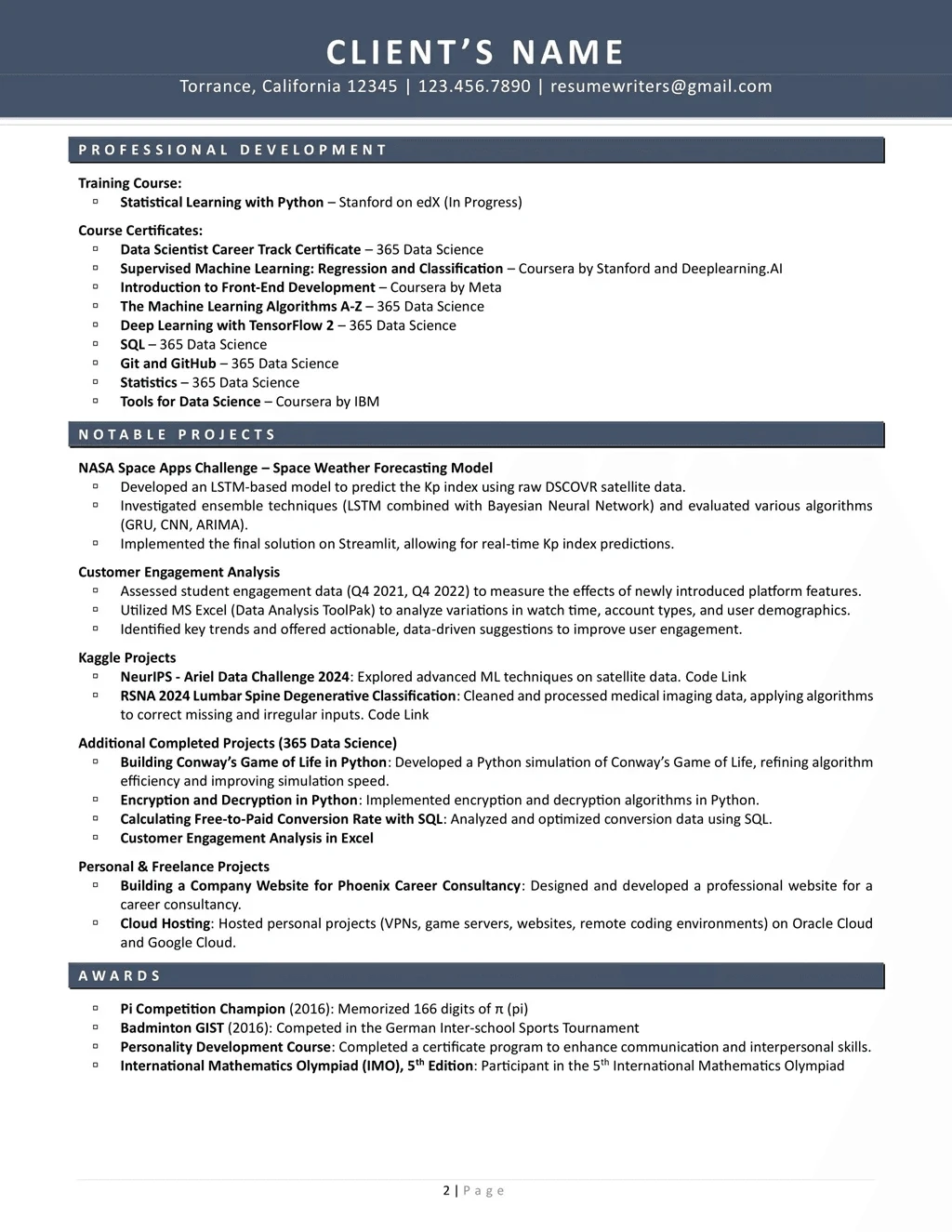
Download your own copy of the entry-level data analyst resume example above.
Senior Manager Data Analyst Resume
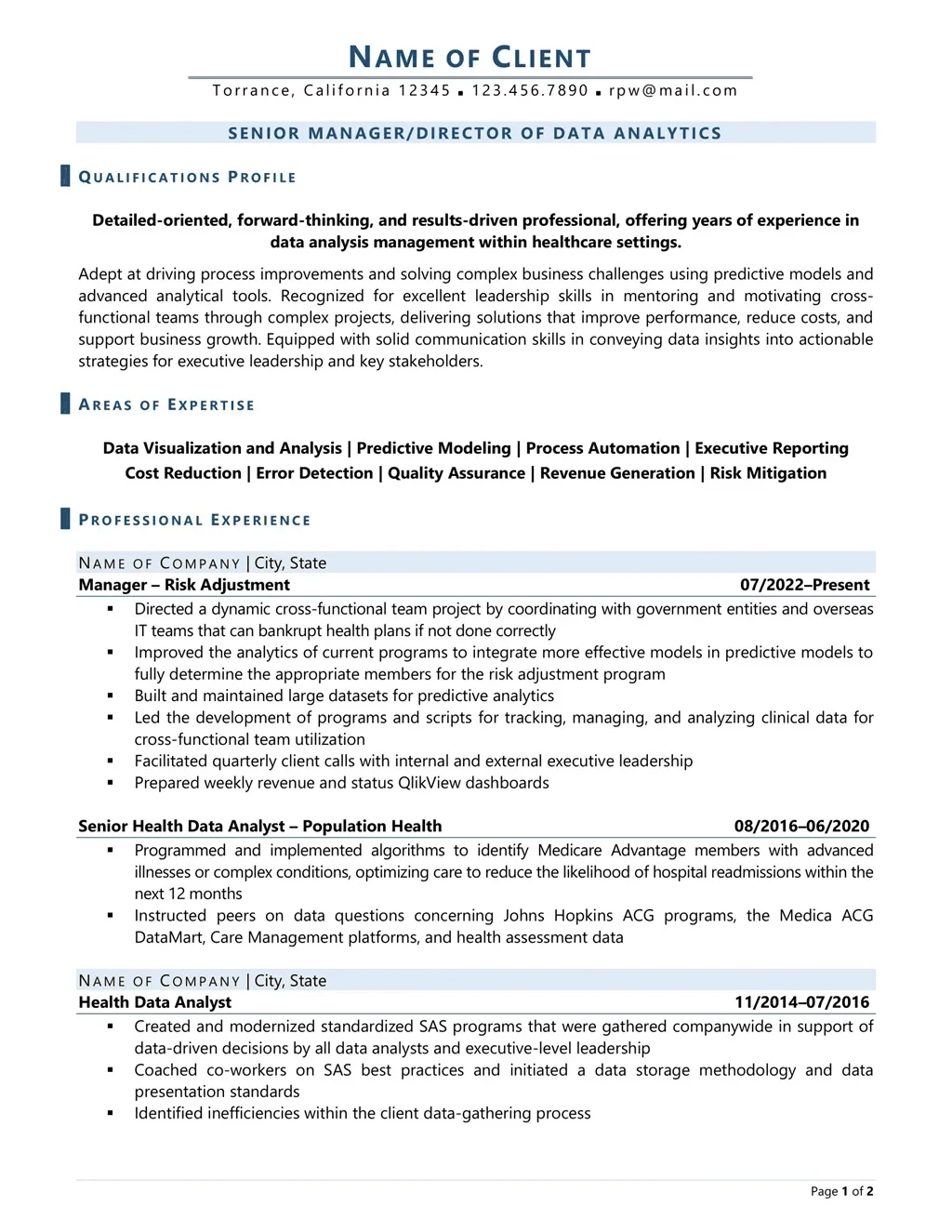
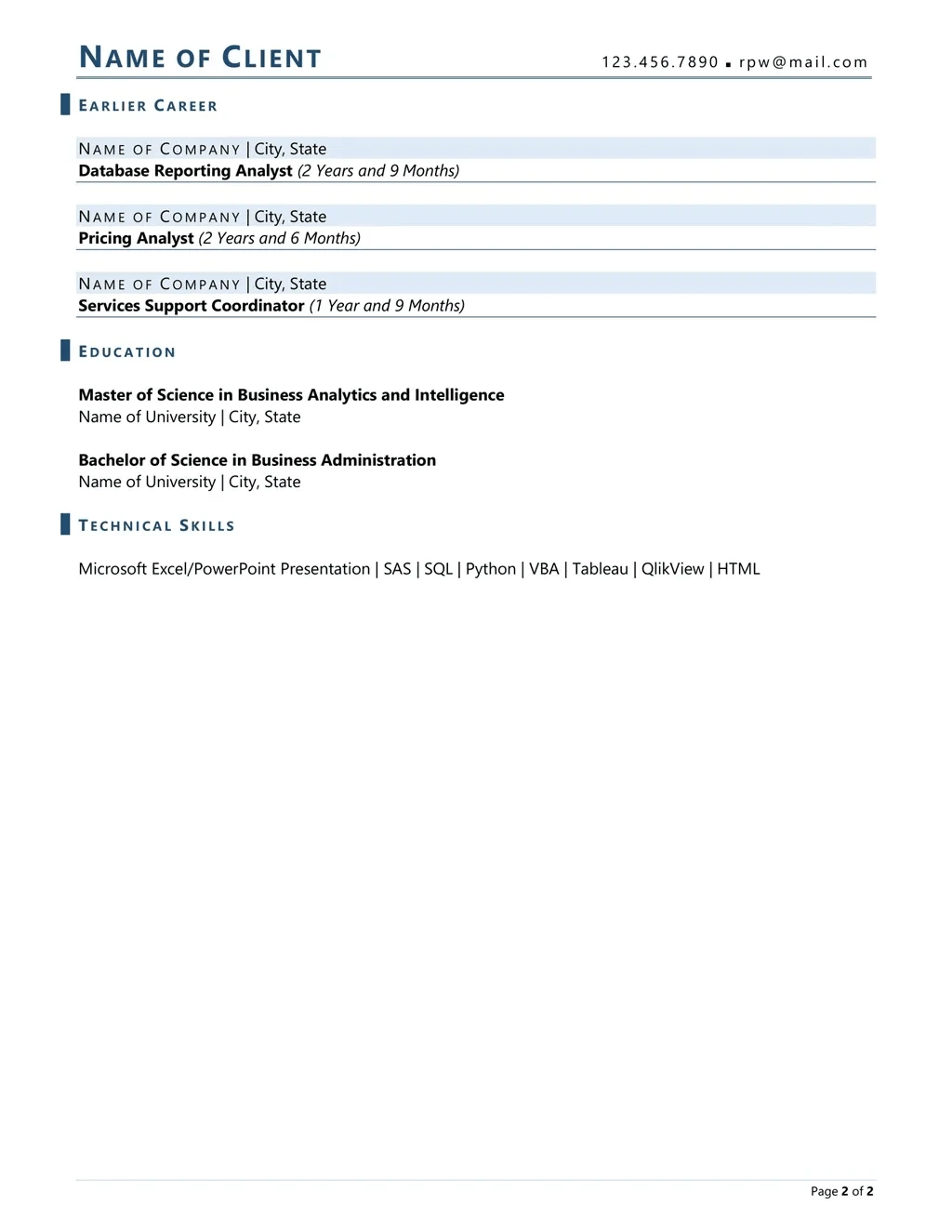
Download your own copy of the senior manager data analyst resume example above.
Why Your Data Analyst Resume Matters More Than Ever
While data analysts are in demand, employers are looking for more than just technical expertise. They’re looking for communicators, problem solvers, and strategic thinkers who can turn numbers into narratives.
A resume is no longer just a list of past jobs—it’s a marketing document that must:
- Showcase business impact
- Highlight relevant tools and technologies
- Demonstrate your ability to turn data into action
- Pass through Applicant Tracking Systems (ATS)
Hiring managers often skim dozens—if not hundreds—of resumes for a single opening. Your resume needs to impress in under 10 seconds.
Choosing the Right Resume Format for Data Analysts
The way you organize your resume can affect how easily recruiters understand your background. Here are the most effective formats and when to use them:
1. Reverse-Chronological Format
This format lists your work experience starting with your most recent role and going backward. It’s the most common layout and is ideal if you have a steady work history in data analytics or similar roles. It clearly shows your career progression and makes it easy for hiring managers to follow your professional journey.
2. Functional/Skills-Based Format
Instead of focusing on where and when you worked, this format highlights your technical skills, tools, and project results. It’s a great choice if you’re switching to a data analyst role from another field, or if you have gaps in your work history. It allows you to lead with your strengths, even if your job titles don’t tell the full story yet.
3. Combination Format
This layout blends both the reverse-chronological and functional formats. It gives equal importance to your skills and work experience. If you’re a mid-level professional with a few years of experience, this format can help you show both what you’ve done and what you’re good at—without forcing you to choose one or the other.
Pro Tips
Keep your layout simple and clean. Avoid using graphics, multiple columns, or unusual fonts that might confuse Applicant Tracking Systems (ATS). Aim for a one-page resume unless you have over 10 years of experience. Use clear section headers like “Professional Summary,” “Skills,” and “Work Experience” to make it easy for someone to quickly find what they’re looking for.
Top Skills to Feature on a Data Analyst Resume
You don’t need to list everything you’ve ever touched—focus on the tools and strengths that match the job you’re applying for. Keep your list relevant, up to date, and backed up by your experience or projects mentioned elsewhere in your resume.
Here are the top skills that usually stand out on a data analyst resume:
Hard Skills
- Python
- R
- SQL
- Tableau
- Power BI
- Looker
- Regression analysis
- Hypothesis testing
- Clustering
- Excel (advanced functions, macros, pivot tables)
- Pandas
- NumPy
- MySQL
- PostgreSQL
- Oracle
- Apache Airflow
- Snowflake
- Amazon Redshift
- Google Analytics
- Adobe Analytics
- Hadoop
- Spark
These tools and techniques are widely used across industries. You don’t need to master every single one—but the more you’re comfortable with, the more flexible and valuable you appear to potential employers.
Soft Skills
- Problem-solving
- Critical thinking
- Communication
- Data storytelling
- Attention to detail
- Collaboration
- Stakeholder management
- Time management
- Adaptability
- Curiosity and willingness to learn
Soft skills often get overlooked, but they matter just as much as technical ones—especially when you’re expected to explain insights to non-technical teammates or help teams make data-driven decisions.
Customizing Skills
Your skills list shouldn’t look exactly the same for every application. Read the job description closely and take note of the tools, methods, or soft skills they highlight. If a role emphasizes A/B testing and dashboard creation, those should be included near the top of your skills section. If the job focuses on SQL-heavy tasks, make sure that’s clear too.
Think of your skills section as a signal—it should quickly tell the reader, “I have what you’re looking for.” Back it up with examples in your experience or projects, and you’ll make a stronger case for moving forward in the hiring process.
How to Tailor Your Resume for Each Application
Customizing your resume for every job might sound time-consuming, but it’s one of the most effective ways to boost your chances of landing an interview. A generic resume blends into the crowd, but a tailored one shows you’ve done your homework and genuinely want the role.
Start With the Job Description
The job description is your roadmap. Read it carefully and highlight the skills, qualifications, and tools that come up more than once.
- Look for keywords like “data visualization,” “SQL,” or “forecasting.”
- Pay attention to required soft skills, such as “collaboration” or “attention to detail.”
- Use these terms naturally in your resume’s summary, experience, and skills sections.
This not only shows relevance—it also helps your resume pass applicant tracking systems (ATS) that scan for these keywords.
Match Your Metrics to the Role
Hiring managers want to see measurable results that align with their priorities. If a role focuses on improving KPIs, cutting costs, or boosting customer retention, tailor your bullet points accordingly.
For example:
- Instead of saying “Analyzed sales trends,” say “Identified product performance gaps, helping increase monthly revenue by 12%.”
- Quantify your impact and tie it to the outcomes they care about.
Use the Company’s Language
Mirroring how a company talks about itself creates instant familiarity. It shows you understand their culture and priorities.
- If they use terms like “cross-functional collaboration,” don’t replace it with “worked with other teams.”
- Align your language with theirs, especially in your professional summary and work experience.
Prioritize Relevant Experience
You don’t need to list every task you’ve ever done. Focus on what matters most to the job you’re applying for.
- Tailor your bullet points to reflect the job’s top requirements.
- If you’re applying for a data analytics role that focuses on customer insights, emphasize projects where you analyzed customer behavior or improved user retention.
Adjust Your Resume Summary
Your resume summary should be more than just a general statement. Use this space to align yourself with the role right away.
Example:
“Data analyst with 3+ years of experience using SQL, Tableau, and Python to uncover insights and optimize marketing campaigns. Proven ability to increase conversion rates and streamline reporting processes.”
This tells the hiring manager, “Yes, I can do this job—and I’ve done it before.”
Keep It Focused and Clean
Tailoring your resume doesn’t mean stuffing it with everything you’ve ever done. Keep it relevant and easy to scan.
- Limit your resume to one or two pages, depending on your experience.
- Use clean formatting and avoid unnecessary jargon.
- Remove irrelevant jobs, outdated tools, or buzzwords that don’t add value.
The Role of Certifications and Courses
If you’re transitioning into data analytics or want to boost your credibility, certifications can be powerful resume additions.
Top Certifications for Data Analysts:
- Google Data Analytics Certificate (Coursera)
- Microsoft Certified: Data Analyst Associate (Power BI)
- IBM Data Analyst Professional Certificate
- Tableau Desktop Specialist
- SAS Certified Specialist
Placement Tip:
Certifications can go in a dedicated “Certifications” section or be embedded in your Education or Skills area, depending on how central they are to your profile.
Projects and Portfolios: Bringing Your Work to Life
If you lack extensive professional experience, data projects can still show your technical and analytical skills. Whether it’s building forecasting models, analyzing A/B tests, or creating dashboards in Tableau or Power BI, these projects provide real evidence of what you can do.
To maximize their impact, share your work where recruiters will see it. Add GitHub links to your resume, create a “Projects” section, and showcase highlights on LinkedIn or your personal site. These make it easier for employers to explore your abilities.
Hiring managers look beyond job titles—they want to see how you solve problems. A clear, results-driven project, like improving upsell conversions by 12% through better targeting, can stand out just as much as formal experience.
Common Mistakes in Data Analyst Resumes (and How to Avoid Them)
Even technically strong candidates get overlooked because of simple yet damaging resume mistakes. Here are six common pitfalls and how you can steer clear of them:
1. Listing Responsibilities Instead of Results
It’s not enough to say what you were responsible for. Employers want to know what you achieved. Instead of saying “Responsible for generating reports,” say something like “Built an automated reporting tool that saved 10 hours per week.” Show the impact of your work.
2. Ignoring Keywords from the Job Description
Many companies use applicant tracking systems to filter resumes. If your resume doesn’t contain the same keywords found in the job post, it might never reach a hiring manager. Read the listing carefully and make sure your resume reflects the tools, skills, and experience they’re looking for.
3. Being Too Technical Without Business Context
Yes, your SQL or Python skills are impressive, but they need to connect to real business value. Did your work reduce costs, speed up a process, or improve decision-making? Always tie your technical contributions to outcomes that matter to the company.
4. Making It Too Long or Too Dense
Avoid packing your resume with every task, tool, or project you’ve ever touched. A cluttered resume is hard to read and dilutes your strongest points. Instead, highlight the most relevant and impressive experiences that align with the role you’re applying for.
5. Using Vague or Generic Language
Terms like “team player” or “go-getter” don’t tell employers much. Be specific about your contributions. For example, instead of saying “Worked with stakeholders,” explain how you gathered requirements, led discussions, or delivered insights that shaped decisions.
6. Skipping Important Sections or Details
Leaving out key resume sections, like a summary or a skills list, can hurt your chances. These help recruiters quickly understand who you are and what you bring to the table. Also, don’t forget to include project links or a portfolio if you have one. It gives your work credibility.
Need Help Crafting the Perfect Data Analyst Resume?
Struggling to make your resume stand out? Our expert team specializes in creating ATS-friendly resumes for data analyst roles, tailored to highlight your skills, achievements, and business impact. Let us help you land more interviews and advance your career with a professionally crafted resume.
Frequently Asked Questions
What types of data projects are suitable for beginners to showcase?
Beginner-friendly projects include data visualizations using public datasets, simple regression models, exploratory data analysis (EDA), or building dashboards that highlight key insights. These can still show valuable skills when presented clearly.
How important is it to explain the business impact of a data project?
Very important. Even a technically impressive project will carry more weight if you can explain how it adds value, such as improving a process, saving time, or revealing key trends.
Can I include group or academic projects in my resume?
Yes, as long as your contributions are clearly outlined. Specify what part of the project you led or supported, especially if it involved tools or techniques relevant to your target role.
Should I tailor the projects I highlight for each job application?
Ideally, yes. If you’re applying for a data analyst role in marketing, showcase projects involving campaign analysis or customer segmentation to align with the role’s requirements.
How can I make my project descriptions more compelling?
Focus on clarity, context, and results. Briefly state the problem, what tools or methods you used, and what outcomes you achieved. Use metrics where possible to demonstrate success.








